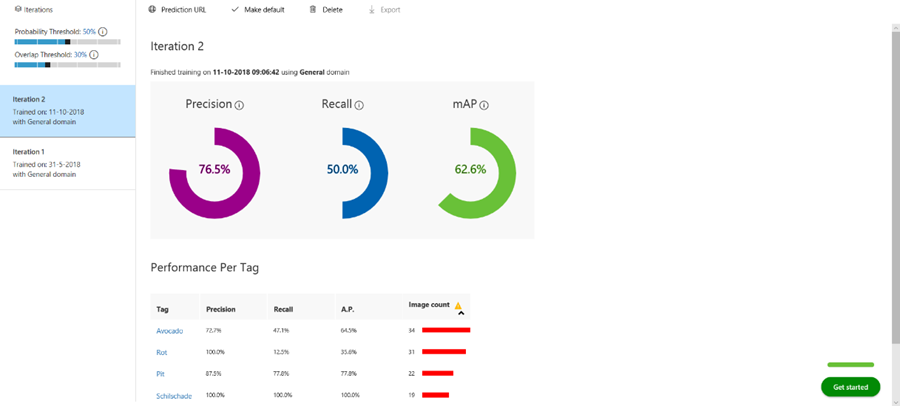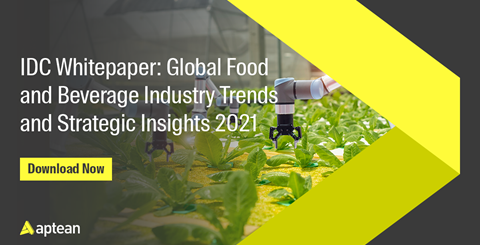One Avocado In Thousands: Using the Power of fhe Cloud
Too many times we found ourselves faced with the same challenge: complaints from our customers’ customers that were endlessly being bounced around the organization. In 99 out of a 100 cases, the customer would submit an email with photos of the broken fruit, in this case avocado’s, a scenario that occurs often in the Fresh Produce industry. How can we connect these different chains? How can we streamline these business processes? Can we use AI to solve business problems? And that got us wondering about the possibilities that lie within the Power Platform. How can we help our customer by combining the different technologies offered by the Microsoft Power Platform?
Harvesting the power of the Microsoft platform
In this specific scenario, we’ve successfully connected multiple Microsoft technologies, in an integrated environment. We used Microsoft’s Custom Vision Cognitive services API. We took the power of our vertical ERP solution and brought it into the Microsoft Outlook client. We created automations with Flow, and, perhaps most importantly, we incorporated them all within the capabilities of the Dynamics 365 platform. This way we managed to standardize the entire process and combine customers and vendors with each other. 
By using the cloud’s learning capabilities, we taught it the difference between a good and a bad avocado. In other words, the system was learning how to differentiate between products by being fed large amounts of data and eventually, how to distinguish between the two, and in the end making a decision that impacts the chain on multiple levels. We simplified the complete complaint administration process, including return orders and credit notes, based on one email with a photo of the relevant product. We’ve connected the chains that interlink these various departments into to one simple, low-code no code workflow.

Using the power of the platform, this is the process breakdown connecting various cloud services together:
- A complaint from a customer is being received through email. The email contains the photos of the damaged fruit.
- The person that received the mail opens Dynamics 365 from within outlook and presses the non-conformance button.
- By doing so, the photos are automatically submitted to Microsoft Azure, where they are being matched against the trained model. The outcome of the model will tell whether these are actually avocado’s and whether they actually contain pits or damages.
- If indeed, it turns out the avocados are broken, the system will automatically send the information to Dynamics 365, create a non-conformance, select the correct shipment, the correct shipment line, increasing track and trace possibilities as well as governance back to the grower.
- Using Microsoft Flow, a mail is sent to the purchase agent containing a hyperlink to approve the customer complaint, making sure he can follow up on the purchase side of the business.
- Once confirmed, the sales person is automatically notified via Flow and an email. One could also make this work via push notifications to a mobile device, in case somebody is not at his desk.
- Finally, the responsible sales agent has the possibility to manually create a return order and credit note from within the complaint overview screen within Dynamics 365. This is a manual process on purpose, since it includes a financial transaction.
This simple process covers experimenting with the Dynamics 365 platform, combining image recognition with the ERP system and, ultimately, achieving valuable results in a short time span. We used the power of the Microsoft Dynamics platform in the cloud to get this all of this up and running in no time. And because it’s all Cloud based, it can all be connected to other services with ease.
Using AI to solve business challenges
Microsoft Cognitive Services are a purpose-built collection of AI algorithms and application programming interfaces (APIs) to help developers add AI capabilities to websites, apps and AI agents.
Cognitive Services allow companies lacking the necessary AI research staff, infrastructure and budget to select AI tools for their needs. Users can choose from a library of Microsoft’s AI algorithms for Cognitive Services on Azure, Microsoft's public cloud computing platform.
For this scenario we used the Image-processing algorithm Custom Vision. This is an AI service used to smartly identify, tag and index labels on images. We labeled these images (of avocados) ourselves during submission. The algorithm trained to this data and applied its own accuracy. We ran two iterations of this sequence, with the second recording scoring the differences with 3% precision increase due to the system’s improved learning capabilities. With a probability threshold of 50%, the model is confident enough to send the information back to the API while anything below 40% will not retrieve any information. Because the Cognitive Services APIs harnesses the power of machine learning, we were able to bring advanced intelligence into our product without the need to have a team of data scientists on hand.
Customer side benefits: Streamlining business processes
Automation of business processes means cost efficiency, transparency, improved business agility, compliance and focus. By implementing these flexible processes, we minimized the usage of different applications and maximized the unified view on quality. We made these systems “talk to each other” and create an integrated environment. In the end we helped our customers by streamlining their supply chain, saving time and, consequently, positively impacting their financial results.
Share your ideas on how we can further harness the power of the Microsoft platform.
We are just scratching the surface of the Cloud. Image all the possibilities Azure has to offer. We will see many more examples in business applications where this power can be used. What do you think this could mean the future?
 Nederlands
Nederlands English
English



